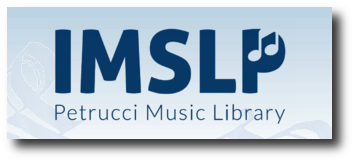|
|
Overture to "La Primavera"
Sheet Music available at:

This overture is dedicated to Pablo Neruda's beautiful poem "La Primavera" which in English means "The Spring".
The opening Andante is composed and played in a quasi-baroque style in the spirit of a Bach or Handel symphonia with a few romantic era techniques such as string tremolos, etc. thrown in. The bass line is simple enough so as not to gather too much attention but suddenly becomes the main focus at the Allegro molto vivace answered by staccatto triplets in the woodwinds. Apart from the opening Andante, all the rest of the Overture is written in a romantic style similar to Mendelssohn, Wagner, Schumann, et al, though the coda seems to have a bit of an Americana/Hollywood vibe.
Eventually we realise that everything we've heard so far is actually introductory material all leading up to a heroic main theme in G major first played by the trumpet, backed up by the rest of the orchestra, and then answered by the woodwinds, strings, and horns. Then follows a mini development section which ultimately leads to a slightly altered version of the main theme, this time in A major, and featuring the woodwinds and strings. Another mini development section follows which takes us back to a written out repeat of the opening Allegro molto vivace in G major. So the form is sonata-allegro even though the first time through we modulated to A major rather than the expected D major.
We hear the main theme again played by the trumpet in G major and answered by the woodwinds and strings in a slightly altered form. Then another mini development section that catapults us once again to the main theme this time in D major as it should be at this point in the piece. Another mini development section follows until suddenly...
The real development section begins. Marked Con fuoco, we get a healthy dose of 19th century Sturm und Drang a la Weiss. Please don't ask me to name the first two chords in this section. All I can say is they get the point across and make the two following diminished 9th and 7th chords sound great :)
The texture suddenly thins out in a section marked "poco meno mosso ma con forza" meaning "a little less motion but with intensity". This turns out to be transitional material that lands us in a short fugue that is a bit like the opening of Smetana's Overture to "The Bartered Bride". Then we get some country fiddle-like sawing in the violins, violas, and cellos which finally takes us to...
The recap in G major with the original material from opening Allegro molto vivace. Our familiar heroic trumpet theme follows, is repeated a 2nd time, and then the second half of this theme is extended so as to not immediately cadence. This gives it the flavor of a grand closing melody so after hearing it once, we immediately hear it again applying a rhythmic motif that we've previously heard in our mini development sections. This winds down to a Tranquillo section which starts the coda, this section being another treatment of the same closing melody.
The Tranquillo section ends and we find ourselves in a Presto which uses material from the opening Andante in a new way combined with elements of our mini development sections. Suddenly we plunge into some more Weissian Sturm und Drang which rockets us into an orchestra wind-up in G major with the trumpets and horns blasting away at the top of their range while the cellos and basses bring back our original bass line from the Andante from which everything else was born.
---Matt
|
|
|
|
copyright © 2007-2025 by Matthew C. Weiss. All rights reserved
|